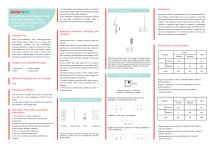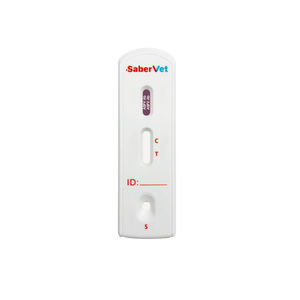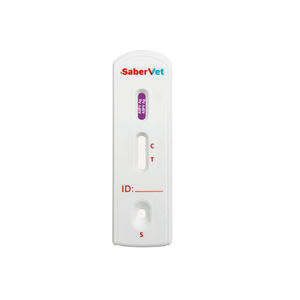
- Laboratory
- Laboratory medicine
- Rapid infectious disease test
- Hangzhou Antigenne Technology Co. Ltd
- Company
- Products
- Catalogs
- News & Trends
- Exhibitions
Rapid infectious disease test SaberVetveterinaryfor cattlevirus
Add to favorites
Compare this product
fo_shop_gate_exact_title
Characteristics
- Applications
- for infectious diseases
- Application field
- veterinary
- Patient type
- for cattle
- Micro-organism
- virus
- Sample type
- urine, clinical, nasal, feces, saliva
- Format
- cassette
Description
Bovine Viral Diarrhea Virus (BVDV) is a virus that severely affects herd health and performance. It is the causative agent of bovine viral diarrhea (BVD) and mucocutaneous disease (MD), and is widespread in cattle herds worldwide.
1.Clinical symptoms
Symptoms of BVDV infection vary depending on the virulence of the virus strain, age of infection and immune status. The main clinical signs include:
Acute infection
Fever: mild to moderate fever.
Diarrhea: watery diarrhea, sometimes accompanied by bleeding.
Respiratory symptoms: cough, nasal discharge, dyspnea.
Immunosuppression: leading to an increased risk of secondary infections.
Chronic infections
Growth retardation: slow growth in infected cattle.
Reproductive problems: including abortion, stillbirths, sterility and fetal malformations.
Hemorrhagic syndrome: severe cases of spontaneous hemorrhage, manifested by bleeding from the gums, intestines, and skin.
Mucocutaneous disease (MD)
Highly lethal: rapid onset and high morbidity and mortality.
Oral ulcers: severe oral, esophageal, and intestinal ulcers.
Wasting and dehydration: rapid wasting and dehydration, often death within a few days.
2.Transmission pathway
Direct contact: spread through saliva, nasal fluid, feces and urine of infected cattle.
Indirect transmission: through contaminated feed, water, equipment and vehicles.
Vertical transmission: the infected cow passes the virus to the fetus through the placenta, resulting in fetal infection or stillbirth.
Semen transmission: transmitted through the semen of infected bulls, resulting in infection of cows.
Exhibitions
Meet this supplier at the following exhibition(s):

Other Hangzhou Antigenne Technology Co. Ltd products
Livestock
Related Searches
- Blood rapid diagnostic test
- Rapid lateral flow test
- Immunoassay rapid diagnostic test
- Cassette rapid diagnostic test
- Virus rapid diagnostic test
- Serum rapid diagnostic test
- Plasma rapid diagnostic test
- Infectious disease rapid diagnostic test
- Whole blood rapid diagnostic test
- Rapid respiratory infection test
- Urine rapid screening test
- Bacteria rapid diagnostic test
- Rapid feces test
- Clinical rapid diagnostic test
- Nasal rapid diagnostic test
- Obstetrical/gynecological rapid test
- Rapid oral flu test
- Dog rapid test
- Coronavirus rapid diagnostic test
- Laboratory rapid diagnostic test
*Prices are pre-tax. They exclude delivery charges and customs duties and do not include additional charges for installation or activation options. Prices are indicative only and may vary by country, with changes to the cost of raw materials and exchange rates.













